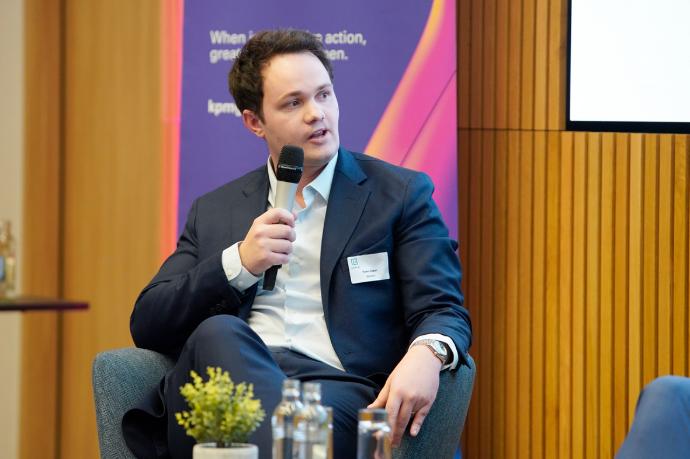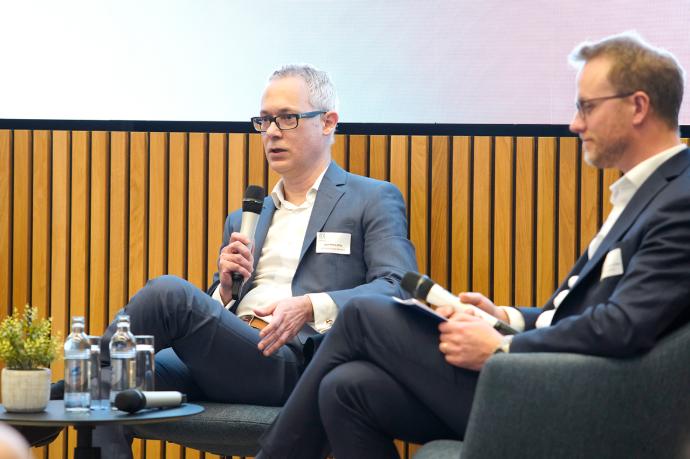Read the full newsletter here
The challenges of property valuation in a changing market
In a shifting economic environment, real estate valuers must process increasingly complex data while meeting the expectations of investors and institutions. Building resilience, ESG risks, and artificial intelligence are reshaping the valuation profession, which now lies at the crossroads of market analysis and strategic foresight.

Yann Faber, Head of Valuation at INOWAI

José Maria Ortiz, Managing Director at ECE Real Estate Partners, Luxembourg
Determining the value of a property amid turbulent market dynamics is no easy task. Yet this is the core mission of valuers, who are often called upon by investors or financial institutions seeking to verify the value of an asset before granting a mortgage loan loan or render their services to alternative investment fund managers as external valuers of their real estate under management. These challenges were central to the “Deals and trends impacting Valuation and other strategies in Luxembourg and beyond” event, hosted by LuxReal in partnership with KPMG on March 6th.
"The challenges are numerous, especially in a difficult market with fewer transactions," says Yann Faber, Head of Valuation at INOWAI. "Luxembourg continues to stand out due to its political stability and low vacancy rates. However, tighter financing conditions, greater uncertainty around future values, and reduced investor confidence have significantly impacted the market. These factors are weighing on asset pricing and leading to downward pressure on valuations — even in the absence of a high number of comparable transactions."
Valuations must take these
market shifts into account. In a favorable environment, valuers could more
easily confirm their analysis based on comparable recent transactions. When the
market stagnates, these reference points become scarce and harder to rely on.
Data Reliability: A Cornerstone of Accurate Valuation
How are valuers adapting? "The fundamentals of analysis remain the same. But ensuring the quality of the data collected is now more crucial than ever to deliver accurate valuations," says Yann Faber. "To meet our clients’ expectations, our valuation models need to be robust. The data they include—encompassing a wide range of variables used to determine a property's intrinsic value—must be reliable.."
To this end, valuers are
heavily investing in data collection and processing. At INOWAI, for instance, a
dedicated Research Manager is responsible for gathering as much market data as
possible and verifying its relevance to support valuations. “The more data we
have, and the better its quality, the more reliable our valuations will be,”
adds Faber.
Anticipating the Risk of Obsolescence
Another major challenge is
keeping pace with changing market expectations and integrating the necessary
medium- and long-term investments into the valuation. “One of the main concerns
is the obsolescence of certain assets. Some are more vulnerable than others and
identifying the stranding dates of real estate within a portfolio is crucial to
effectively prioritize value-add investments needs. It's essential to advise
investors on how a property’s value may evolve over time and what investments
will be needed to preserve it,” explains José Maria Ortiz, Managing Director at
ECE Real Estate Partners, Luxembourg. “Environmental regulations can
significantly impact asset value and may require the replacement of key
technical equipment to maintain energy performance.”
Factoring in Future Investments
To ensure a property remains attractive—and therefore profitable— and meets the net zero carbon-emissions target, certain investments are becoming essential: upgrading heating and ventilation systems, improving insulation, installing solar panels, switching to LED lightning and more. These must be accounted for during a thorough technical and environmental due diligence phase prior to acquisition. "Several tools are available to help us assess these factors. One example is the Carbon Risk Real Estate Monitor, a research-based tool and methodology backed by various European universities and funded by the European Union to help real estate investors and fund managers to evaluate the carbon transition risks based on a building's carbon footprint," continues José Maria Ortiz.
“These issues must be incorporated into our analysis, especially as the obsolescence risk increases for buildings that no longer comply with environmental regulations or are exposed to climate-related threats.”
Factoring in these elements
helps define the investment levels needed to keep assets compliant—and can
influence sale price negotiations.
Winners and Losers in the Market
According to Yann Faber, other major market trends must also be considered. “In the office sector, environmental considerations and certification standards have become crucial”, explains INOWAI’s Head of Valuation. “Investors are increasingly selective, and banks are progressively limiting financing for non-ESG-compliant buildings. As a result, secondary office assets that do not meet current environmental criteria are facing growing pressure.”
In retail, the expansion of
e-commerce continues to challenge traditional formats. “Retail spaces are
generally under pressure, except in high-traffic prime locations, where
physical stores still play a strategic role as brand showcases,” he adds.
“Understanding these trends is key to distinguishing resilient assets from
those facing greater market pressure.”
Leveraging AI to Enhance Analysis
For valuers, it is essential to continuously refine their models and push their analysis further. Technology can support this evolution.
"Artificial intelligence, in particular, enables us to carry out many tasks more efficiently. Time saved on data collection, processing, or report writing can be reallocated to sharpening our analysis, expanding our market knowledge, improving our models, and meeting growing client demand," explains Yann Faber.
A sound valuation is essential to making informed real estate investment decisions. In a rapidly evolving market, valuers must meet new challenges and adapt constantly. More than just technicians of value, they are becoming strategic partners at the heart of real estate’s transformation.